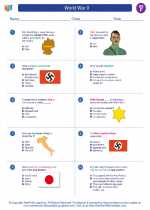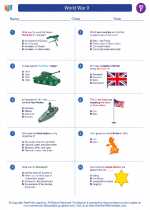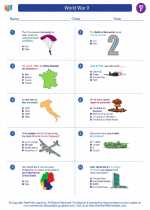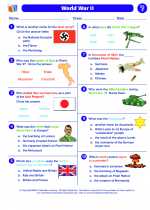What are Landscapes?
A landscape is the visible features of an area of land, including physical elements such as terrain, vegetation, water bodies, and human-made structures. It encompasses the natural and human-built environments and can vary widely based on geographical location, climate, and human activities.
Types of Landscapes
There are several types of landscapes, each with unique characteristics:
- Natural Landscapes: These are the result of natural processes and include mountains, forests, deserts, and bodies of water.
- Cultural Landscapes: These are landscapes that have been influenced or shaped by human activity, such as agricultural fields, urban areas, and industrial sites.
- Urban Landscapes: These are the landscapes found in cities and towns, consisting of buildings, roads, parks, and other urban infrastructure.
- Rural Landscapes: These landscapes are typically found in the countryside and include farmland, villages, and natural features.
Factors Influencing Landscapes
Several factors contribute to the formation and evolution of landscapes:
- Geological Processes: The movement of tectonic plates, volcanic activity, and erosion shape the Earth's surface and contribute to the formation of landscapes.
- Climatic Conditions: Climate influences the types of vegetation, soil, and landforms that make up a landscape. For example, tropical climates may have lush rainforests, while arid climates may have deserts.
- Human Activities: Human actions such as agriculture, urbanization, and industrialization can significantly alter landscapes, leading to the creation of cultural and urban landscapes.
Studying Landscapes
When studying landscapes, it is important to consider the various elements that contribute to their formation and appearance. Students should pay attention to the following aspects:
- Physical Features: Identify and describe the landforms, vegetation, and water bodies present in a landscape.
- Human Impact: Understand how human activities have influenced the landscape, including urban development, agriculture, and conservation efforts.
- Geographical Patterns: Analyze the distribution of landscapes across different regions and continents, considering factors such as climate and geological processes.
- Environmental Changes: Explore how natural and human-induced changes can impact landscapes over time, including issues such as deforestation, climate change, and land degradation.
[Landscapes] Related Worksheets and Study Guides:
.◂Social Studies Worksheets and Study Guides Sixth Grade. World War II
Study Guide World War II
World War II  Worksheet/Answer key
Worksheet/Answer key World War II
World War II  Worksheet/Answer key
Worksheet/Answer key World War II
World War II  Worksheet/Answer key
Worksheet/Answer key World War II
World War II  Worksheet/Answer key
Worksheet/Answer key World War II
World War II 

 Worksheet/Answer key
Worksheet/Answer key
 Worksheet/Answer key
Worksheet/Answer key
 Worksheet/Answer key
Worksheet/Answer key
 Worksheet/Answer key
Worksheet/Answer key

The resources above cover the following skills:
National Curriculum Standards for Social Studies (NCSS)
TIME, CONTINUITY, AND CHANGE
SOCIAL STUDIES PROGRAMS SHOULD INCLUDE EXPERIENCES THAT PROVIDE FOR THE STUDY OF THE PAST AND ITS LEGACY.
KNOWLEDGE - Learners will understand:
Concepts such as: chronology, causality, change, conflict, complexity, multiple perspectives, primary and secondary sources, and cause and effect.
PEOPLE, PLACES, AND ENVIRONMENTS
SOCIAL STUDIES PROGRAMS SHOULD INCLUDE EXPERIENCES THAT PROVIDE FOR THE STUDY OF PEOPLE, PLACES, AND ENVIRONMENTS.
KNOWLEDGE - Learners will understand:
Factors that contribute to cooperation and conflict among peoples of the nation and world, including language, religion, and political beliefs.
INDIVIDUALS, GROUPS, AND INSTITUTIONS
SOCIAL STUDIES PROGRAMS SHOULD INCLUDE EXPERIENCES THAT PROVIDE FOR THE STUDY OF INTERACTIONS AMONG INDIVIDUALS, GROUPS, AND INSTITUTIONS.
KNOWLEDGE - Learners will understand:
That when two or more groups with differing norms and beliefs interact, accommodation or conflict may result.
PROCESSES - Learners will be able to:
Analyze the effects of interactions between and among individuals, groups, and institutions.
Identify and analyze the impact of tensions between and among individuals, groups, and institutions.
POWER, AUTHORITY, AND GOVERNANCE
SOCIAL STUDIES PROGRAMS SHOULD INCLUDE EXPERIENCES THAT PROVIDE FOR THE STUDY OF HOW PEOPLE CREATE, INTERACT WITH, AND CHANGE STRUCTURES OF POWER, AUTHORITY, AND GOVERNANCE.
PROCESSES - Learners will be able to:
Analyze and evaluate conditions, actions, and motivations that contribute to conflict and cooperation among groups and nations.
Evaluate the role of technology as it contributes to conflict and cooperation among nations and groups, and as it contributes to or detracts from systems of power, authority, and governance.
GLOBAL CONNECTIONS
SOCIAL STUDIES PROGRAMS SHOULD INCLUDE EXPERIENCES THAT PROVIDE FOR THE STUDY OF GLOBAL CONNECTIONS AND INTERDEPENDENCE.
PROCESSES - Learners will be able to:
Analyze examples of conflict, cooperation, and interdependence among groups, com-munities, regions, societies, and nations.
Describe and explain the relationships and tensions between national sovereignty and global interests in such matters as territorial rights, natural resources, trade, the different uses of technology, and the welfare of people.
National Standards for Civics and Government (NSCG)
What are civic life, politics, and government? What are the essential characteristics of limited and unlimited government?
Limited and unlimited governments. Students should be able to describe the essential characteristics of limited and unlimited governments. To achieve this standard, students should be able to
Identify historical and contemporary examples of limited and unlimited governments and justify their classification, e.g.,
Unlimited governments--Nazi Germany, Imperial Japan, Spain under Franco, Argentina under Peron, Iraq under Hussein, Iran
What are civic life, politics, and government? What are the nature and purposes of constitutions?
Concepts of ''constitution.'' Students should be able to explain alternative uses of the term constitution'' and to distinguish between governments with a constitution and a constitutional government. To achieve this standard, students should be able to
Identify historical and contemporary nations with constitutions that in reality do not limit power, e.g., former Soviet Union, Nazi Germany, Iraq under Saddam Hussein
What are the foundations of the American political system? What is American political culture?
The character of American political conflict. Students should be able to describe the character of American political conflict and explain factors that usually prevent violence or that lower its intensity. To achieve this standard, students should be able to
Describe political conflict in the United States both historically and at present, such as conflict about
Engaging in wars
What are the foundations of the American political system? What values and principles are basic to American constitutional democracy?
Conflicts among values and principles in American political and social life. Students should be able to evaluate, take, and defend positions on issues in which fundamental values and principles are in conflict. To achieve this standard, students should be able to
Explain why people may agree on values or principles in the abstract but disagree when they are applied to specific issues
Agreement on the value of freedom of expression but disagreement about the extent to which expression of unpopular and offensive views should be tolerated, e.g., neo-Nazi demonstrations, racial slurs, profanity, lyrics that advocate violence
What is the relationship of the United States to other nations and to world affairs? How is the world organized politically?
Interaction among nation-states. Students should be able to explain how nation-states interact with each other. To achieve this standard, students should be able to
Describe the most important means nation-states use to interact with one another
Military force and the threat of force
Explain reasons for the breakdown of order among nation-states, e.g., conflicts about national interests, ethnicity, and religion; competition for resources and territory; absence of effective means to enforce international law
Explain the consequences of the breakdown of order among nation-states
What is the relationship of the United States to other nations and to world affairs? How has the United States influenced other nations and how have other nations influenced American politics and society?
Impact of the American concept of democracy and individual rights on the world. Students should be able to describe the influence of American political ideas on other nations. To achieve this standard, students should be able to
Describe the influence American ideas about rights have had on other nations and international organizations, e.g., French Revolution; democracy movements in Eastern Europe, People's Republic of China, Latin America, South Africa; United Nations Charter; Universal Declaration of Human Rights
National Center for History in Schools (NCHS)
Historical Thinking Standards
Historical Comprehension
Reconstruct the literal meaning of a historical passage.
Historical Analysis and Interpretation
Analyze cause-and-effect relationships and multiple causation, including the importance of the individual, the influence of ideas.
United States History Content Standards
Era 7: The Emergence of Modern America (1890-1930)
How the United States changed from the end of World War I to the eve of the Great Depression.
The student understands politics and international affairs in the 1920s.
Era 8: The Great Depression and World War II (1929-1945)
The causes and course of World War II, the character of the war at home and abroad, and its reshaping of the U.S. role in world affairs.
The student understands World War II and how the Allies prevailed.
World History Content Standards
Era 8: A Half-Century of Crisis and Achievement, 1900-1945
The search for peace and stability in the 1920s and 1930s.
The student understands postwar efforts to achieve lasting peace and social and economic recovery.
The causes and global consequences of World War II.
The student understands the global scope, outcome, and human costs of the war.
Major global trends from 1900 to the end of World War II.
The student understands major global trends from 1900 to the end of World War II.